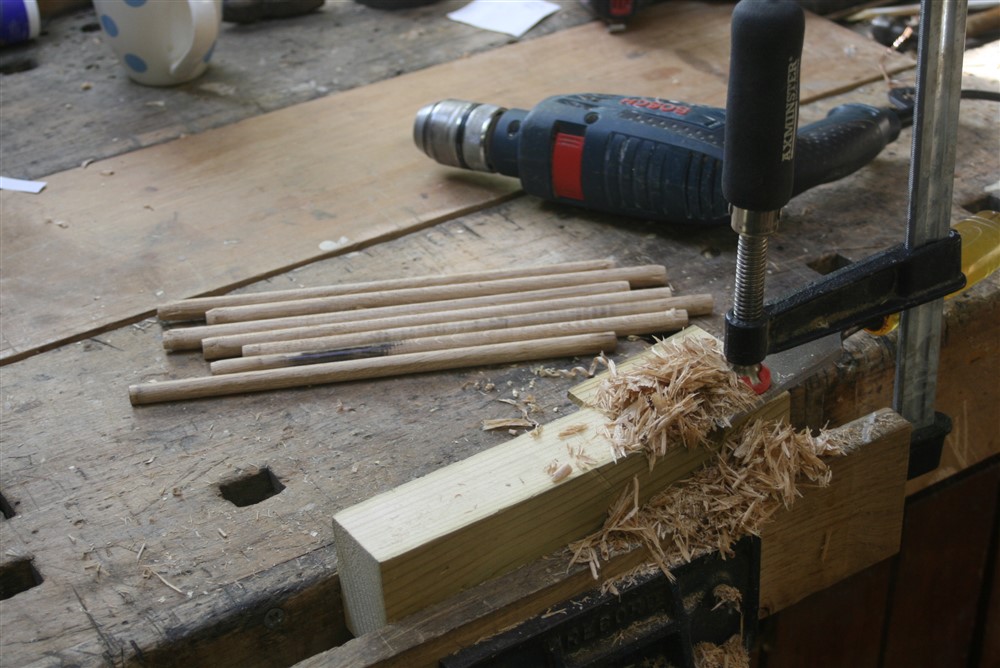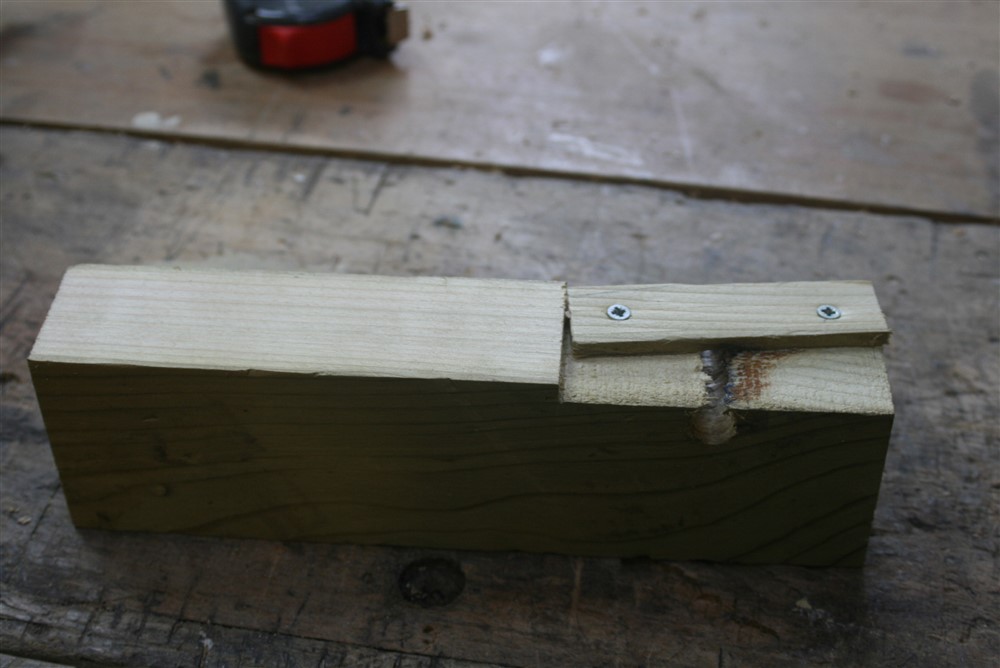Steve Maskery
Established Member
Yesterday I blocked up the legs from 2 pieces of 4x2, but I don't have pics. I'll take some when I work on them. I'm a bit disappointed that one board was very badly stained. I thought it was just the surface and it would plane off, but no, it goes right in. Not just blue, but orange, too. Never seen anything like it. As a single piece it could look quite attractive, but it's not what I want here. I'll put those to the inside of the frame, and if it still bugs me I'll get the paintbrush out.
Unusually for me I'm trying to think ahead. I'm going to re-use my existing QR vice. As it is mounted at the mo, it is proud of the front edge of the bench. This was to allow me to slip auxilliary jaws over them for specific tasks. In particular, my original mortising jig was used like that. These days I have (even) better options, so my rear vice jaw is going to be flush with the front edge of the bench top. So I need to excavate.
This is easier to do now rather than after I have glued up my top. I was not in Noisy Mood today, so I decided to go old-school.


That left me with a deep cavity for the rear (metal) jaw of the vice.

Then the same again, wider but shallower, for the (replaceable) rear vice jaw.
Remember I cut a groove right the way along with my dado stack for the sliding deadman? That was a mistake. Not a huge, project-destroying, mistake, but it meant I had a groove in the vice area which I neither needed nor wanted. So I back filled it in that area. That filler piece went in perfectly straight off the saw, by hand, without a hammer and not being sloppy. I was fairly surprised myself. I thank you.
So this is the end result:

Not sure if I'll get anything done tomorrow, I'm having my eyes counted. I hope it gets to 2, but I fear the verdict will be one-and-a-bit
Unusually for me I'm trying to think ahead. I'm going to re-use my existing QR vice. As it is mounted at the mo, it is proud of the front edge of the bench. This was to allow me to slip auxilliary jaws over them for specific tasks. In particular, my original mortising jig was used like that. These days I have (even) better options, so my rear vice jaw is going to be flush with the front edge of the bench top. So I need to excavate.
This is easier to do now rather than after I have glued up my top. I was not in Noisy Mood today, so I decided to go old-school.


That left me with a deep cavity for the rear (metal) jaw of the vice.

Then the same again, wider but shallower, for the (replaceable) rear vice jaw.
Remember I cut a groove right the way along with my dado stack for the sliding deadman? That was a mistake. Not a huge, project-destroying, mistake, but it meant I had a groove in the vice area which I neither needed nor wanted. So I back filled it in that area. That filler piece went in perfectly straight off the saw, by hand, without a hammer and not being sloppy. I was fairly surprised myself. I thank you.
So this is the end result:

Not sure if I'll get anything done tomorrow, I'm having my eyes counted. I hope it gets to 2, but I fear the verdict will be one-and-a-bit
























































































